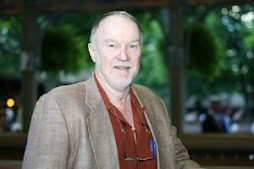2009 may be the year of Rachel Alexandra in the U.S., but many European pundits believe they also have an all-time great on the scene in Sea The Stars. The handsome Cape Cross colt scored his fifth consecutive Group 1 win of the season on Saturday, beating Irish Derby winner Fame and Glory in the Irish Champion S.
The Irish Champion was Sea The Stars's seventh consecutive victory in his eight starts—he finished a green fourth in his first start behind two subsequent stakes winners and this year's Dante S. second.
Each of Sea The Stars's seven wins has been characterized by an ability to cruise along behind the leaders and then unleash a dramatic, decisive turn of foot in the final furlong. The Irish Champion was no different. Aidan O'Brien has been trying to beat Sea The Stars all season and he threw two pacemakers and two of his three best 3-year-olds at Sea The Stars on Saturday.
The pacemakers set a very fast pace over yielding ground with Ballydoyle's 2008 champion juvenile and '09 dual Group 1 winner Mastercraftsman cruising in third. On the turn, Johnny Murtaugh moved Ballydoyle's first string, Fame and Glory up on the outside of Sea The Stars with the obvious intention of getting first run and testing the champion's stamina to the fullest.
It didn't matter...Mick Kinane on Sea The Stars merely followed Fame and Glory through, then simply sprinted past with 100 yards to go, winning by 2 ½ lengths. The performance reminded me a lot of Sir Ivor's performances in the 1968 Epsom Derby and Washington D.C. International. In each case, the winner made some of the fastest horses in the world look slow with a remarkable turn of foot.
That ability to accelerate in a stride or two at the end of a race and produce an 11-second furlong is very rare and it is always visually impressive. But what does it actually mean in terms of form? British turf writers are comparing Sea The Stars favorably to *Sea-Bird and Brigadier Gerard, the two highest-rated horses in the history of the authoritative Timeform ratings. *Sea-Bird earned a 145 (pounds) rating in 1965 and Brigadier Gerard was rated 144 in 1972. *Tudor Minstrel also received a 144 in 1947, but that is apparently so long ago that no one cares anymore, or perhaps everyone but us curmudgeons has forgotten.
Brigadier Gerard won 17 of 18 starts from 1970-72, beaten only by Roberto under an all time great ride by Braulio Baeza in the '72 Benson and Hedges Gold Cup. In the 1972 2,000 Guineas, Brigadier Gerard beat another all-time great, Mill Reef, by three lengths. Mill Reef, who needed a longer distance to be at his very best, was rated 141 by Timeform.
*Sea-Bird won 7 of 8 starts in 1964-65 with a visually impressive style very similar to that of Sea The Stars. In the 1965 Prix de l'Arc de Triomphe, *Sea-Bird beat Reliance by six lengths with *Diatome five lengths further away third, accumulating all of that record-equaling margin in the last furlong and a half with a devastating turn of speed. Reliance had won all of his previous races including the French Derby, and *Diatome subsequently scored a comfortable victory in the D.C. International. Timeform rated Reliance 137, Diatome 132.
It is clear from those details that *Sea-Bird and Brigadier Gerard earned their high ratings through performance, but, realistically, what kind of rating has Sea The Stars actually earned this year? In succession, he has beaten Delegator by 1 ½ lengths in the 2,000 Guineas, Fame and Glory by 1 ¾ lengths in the Epsom Derby-G1, Rip van Winkle by a length in the Eclipse, Mastercraftsman by a length in the Juddmonte International, and Fame and Glory by 2 ½ lengths at Leopardstown.
Those are all good horses, and worthy classic horses in an average year, but with the possible, marginal exception of Rip van Winkle, does anyone really believe that any of those horses he has beaten is worth much more than 132 or 133 on the Timeform scale?
No, I didn't think so.
Clearly, Sea The Stars is a great racehorse, the best we have seen in Europe in more than a decade, but *Sea-Bird? The Brigadier? Mill Reef? Not yet anyway. On paper at least, he has consistently produced a performance worth somewhere between about 134 and 138 on the Timeform scale, where a length translates into about 2 pounds. That's in the Timeform ballpark occupied by such as Nijinsky II and *Vaguely Noble, which is heady enough territory for almost any horse.
Consistency is admirable, but it is not the same thing as absolute, all-time great ability. The all-time greats, the *Sea-Birds, the *Ribots (Timeform 142), the Secretariats, are capable of completely running away from rivals who have proven themselves to be racehorses of the 132 to 135 class on the Timeform scale.
Good as he is, Sea The Stars has not yet done that.
They don't call me the Pedigree Curmudgeon for nothing.
The Horse Racing blog has moved
10 years ago


No comments:
Post a Comment